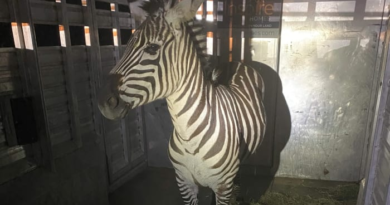7 Bizarre Fake News Stories People Believed Were True – TechRound
November 24, 2023
In a recent episode of “I’m A Celebrity… Get Me Out of Here!”, YouTuber Nella Rose confronted Nigel Farage about his stance on immigration.
Rose, addressing Farage said “Apparently you’re anti-immigrants”. Farage insisted he was misunderstood and not anti-immigrant but concerned about high immigration numbers affecting services like GP appointments.
When asked about where she read about Farage’s stance, she said “on the internet” to which he replied “oh well there we are then, it must be true”.
At Techround, this got us thinking about some of the weird and wonderful stories that have been circulated as true on the internet.
Let’s dive in:
In a classic case of fake news, a satirical article from WTOE 5 News falsely claimed Pope Francis endorsed Donald Trump for President, under the guise of him being a “concerned citizen of the world.”
The website, known for its fantasy and satire content, fabricated the Pope’s comments on the FBI and Hillary Clinton. In reality, Pope Francis had criticised Trump’s border wall plan, stating it wasn’t Christian to focus on building walls over bridges. After the article gained widespread traction, the Vatican clarified these were not political endorsements. The Pope himself stated his non-involvement in political endorsements, urging informed and conscientious voting decisions.
Source: Miappi
In 1910, Halley’s Comet’s approach to Earth stirred widespread panic and bizarre reactions. French astronomer Camille Flammarion fuelled fears by suggesting the comet could extinguish all life on Earth. This led to Halley’s Comet being labelled “the evil eye of the sky,” as reported by the Library of Congress.
The resulting mass hysteria drove people to buy anti-comet pills and gas masks, fearing a catastrophic collision and consequent apocalyptic explosion. Despite these fears, the comet passed harmlessly between Earth and the sun in May 1910. Halley’s Comet is a periodic visitor, appearing approximately every 75 years. It was last seen in 1986 and is expected to return in 2061.
The myth of the Megalodon, a prehistoric shark, continues to captivate the internet, with periodic stories and manipulated images suggesting its continued existence. Despite clear scientific evidence that the Megalodon has been extinct for millions of years, these tales persist, often accompanied by convincingly doctored photographs or videos.
These claims play into the appeal of undiscovered creatures lurking in the depths of the oceans. However, experts consistently debunk these stories, confirming that the Megalodon, the largest shark ever to have lived, remains a part of Earth’s distant past, not its present.
The internet has seen the spread of “breatharianism,” a belief that humans can survive solely on sunlight, without any need for food and water. This concept, entirely unsupported by science, says that one can draw life-sustaining energy from sunlight alone, similar to plant photosynthesis.
Despite its popularity in certain online circles, medical experts and nutritionists unanimously debunk breatharianism as a dangerous myth.
The bizarre claim that dinosaurs never existed has surfaced occasionally on the internet, challenging the well-established scientific understanding of Earth’s history. Supporters of this theory often argue that dinosaur fossils are fabrications, despite the overwhelming archaeological evidence and rigorous scientific methods used in paleontology.
This piece of fake news, which has resurfaced multiple times since first appearing in 2014, claims that France banned work emails after 6 PM.
While it’s true that France introduced a “right to disconnect” law, this legislation does not specifically ban work emails after 6 PM. Instead, it allows employees the right to disconnect from work-related communications outside of work hours, promoting a better work-life balance. The misinterpretation of this law led to the exaggerated claim of a complete email ban – spreading further misinformation around the country’s labour practices.
Source: Miappi
In a bizarre twist to the 2016 U.S. presidential election, reports circulated claiming that Harambe, the late gorilla, received 11,000 write-in votes. This story suggested that these votes could have significantly influenced the election outcome, potentially impacting Hillary Clinton’s chances. However, this entire narrative was fabricated. The truth is, the beloved gorilla, who became an internet sensation after his death, did not receive thousands of votes.
Source: Miappi
In conclusion, the landscape of fake news encompasses everything from the political to the bizarre. These examples, ranging from the humorous to the surreal, highlight the creative lengths to which the internet can go.
They also serve as a reminder not to always believe what you read. Though in the case of Nella and Nigel, we’ll leave that one up to you…
October 23, 2018
October 23, 2018
October 24, 2018
[email protected]
TechRound
325-327 Oldfield Lane North,
London UB6 0FX
Download our media pack
We are delighted to announce that award submissions for 2022 are open. We are running the Techround 100, BAME 50 and the 29 under 29 competitions.
Enter now and get your business in front of an influential audience of over 300,000 monthly visitors.
No thanks, I’m not interested!




